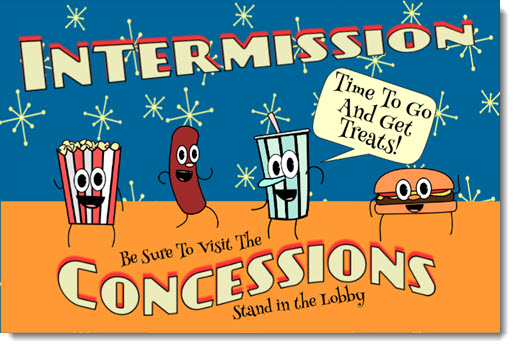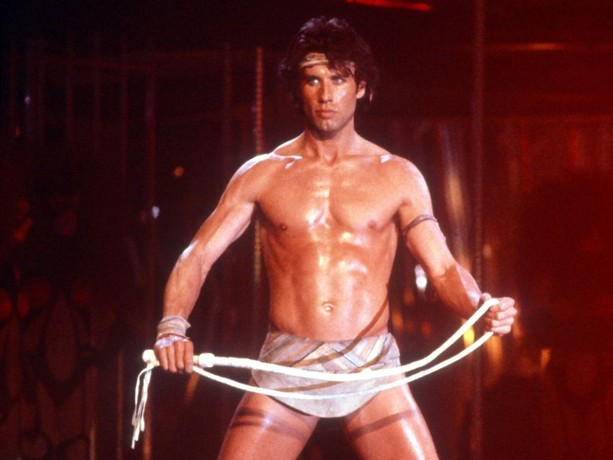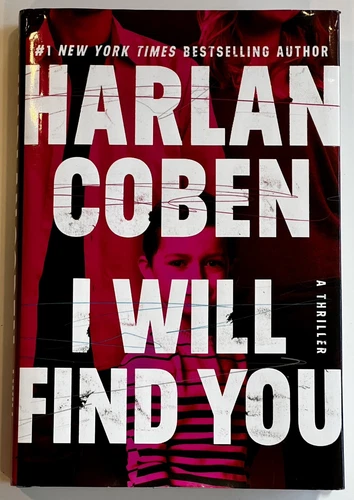
By PJ Parrish
I heard from one of my ex-students recently who is struggling with her work in progress. I met her years ago at a three-day workshop my sister and I did at Saturn Booksellers in Gaylord, MI. She was a solid writer with a great attitude who had self-pubbed two thrillers but was looking to up her craft. Hadn’t heard anything since.
But this week, she reappeared on my radar. She was at war with The Beast. Also known as Backstory. And the beast was winning. Here’s part of her email:
Unlike my first book, this book has an important backstory the detective needs to know (and feel) that will help him deal with a tragedy that will be fall him as he solves the current case.
I am having trouble determining where and when to insert the backstory. It has many scenes ( 8 or 9) that I prefer writing as “live” as opposed to telling. It’s important that the backstory character, who we never meet in the current time portions of the book, comes to vivid life.
I need help with tips on when and how to insert and how to make sure the reader knows that the author has suddenly taken them to another time period so they aren’t confused.
Thank You
Jess W.
Ah me. Who hasn’t been in Jess’s place? I know I have. Because Kelly and I dealt with a series, it got easier the farther along we went. By about book 4, we had less urgency to “explain” our protagonist’s past. But we realized, too, that the backstory had to become more layered and nuanced as our character progressed in age and experience.
I told Jess I’d get back to her after I talked to you guys. I asked her to give me a short synopsis of the backstory so I could get a better grip on the problem. I am hoping you’ll hang around here today, read up, and also give her some help.
First, some context. I’ll say it: Backstory is a bitch. You need it to bring your character to life and even illuminate the present-day plot. But man, it can really kill your forward momentum.
One of my go-to teachers on backstory is editor and writing teacher Jane Friedman. I’ve quoted her often in workshops. With 25 years in the publishing biz, she has dispensed easy-to-digest advice mainly via her blog/newspaper The Bottom Line. In 2023, she was named Publishing Commentator of the Year by Digital Book World. Jane’s expertise regularly features in major media outlets such as The New York Times, The Atlantic, The Today Show, Wired, Fox News, and BBC. So let me establish a base line by quoting her on some basics of backstory:
- Characters don’t exist in a vacuum: Who they are, what they want, and why they do what they do is rooted in who they have been and what they have done—in other words, backstory.
- Backstory brings characters to life, gives them depth and dimension, and draws readers in. Without it characters may feel opaque or flat, their actions random or unmotivated.
- But too much backstory can dilute and derail your actual story.
- Backstory is a potent tool in your writing, and like all power tools it must be operated carefully—too much and your story may bog down and stall out; too little and readers may feel uninvested or confused. Finding that balance can be tricky.
I couldn’t have said it better. Here’s the link to her full post on the subject. Read it and don’t weep. It will help clear your head.
Backstory is a tool. A powerful one. It is also a strategy. You have to wield it with a clear head and great deliberation. You never just toss it in.
Here’s what I have learned about finding the “balance” Jane Friedman speaks of: You should reveal backstory details only when they are relevant to the present plot and character development. You should never, ever, info-dump all at once. It must enhance the present narrative by providing context for current events and motivations.
And transitioning from present-plot to backstory is a fine art. I could do an entire blog on that alone. (Go read the link to that in Friedman’s blog). But we don’t have time today, because I want to help Jess out.
Here’s what she sent me about her present-day plot and its backstory:
Archie is a 30+ Detective Sergeant in a medium sized Michigan city. The current timeline opens with Archie responding to the kidnapping of a 5-year-old boy, taken from his bedroom during the night through an unlocked window. These are early investigative chapters with no backstory. There are many suspects—including the child’s mother.
BACKSTORY:
Archie is a loner, by-the-book-cop who takes every case to heart. He feels most of the cops he works are lazy and do not go the extra mile. His only friend is an older ex-sergeant who rescued him from a life of crime as a rebellious teen and put him on the path to the job he now has, resulting in intense loyalty on Archie’s part. The friend is also now a PI.
When Archie was 15, his beloved father was murdered. On day of this murder, Archie overheard a phone call from his mother which led him to suspect she (and an unknown lover) set up the murder of his dad on an isolated highway as he was on his way to buy Archie a used Jeep for his 16th birthday. Archie testified at a grand jury but the local police thought they did not have enough evidence and the crime remained unsolved. Archie’s stance in the case cost him his relationship with his mother and older brother.
Before his father’s murder, the father had purchased a small piece of land high on a hill on a 20-year Land Contract (where the owner financed it). Dad called the place Stardust after the old song. Archie and his brother assumed the contract after dad died. Eventually, Archie bought his brother out, but now is now responsible for all the payments including a large balloon payment coming at the end of the year.
Financially strapped, Archie lives in a small mom-and-pop resort of renetal cabins. His home is a memorial to his father with small reminders of a happy life lived before his mother ruined it all by her series of affairs. His dad’s records, the refinished stereo Archie plays them on, a portrait of him and his dad, a lava lamp his dad gave him, a POW Flag the father used to his hang for Archie’s grandad who never came home from Nam—stuff like that.
A year before the book opens, Archie met a woman who managed to squeeze through his emotional roadblocks. She was bookish and quiet. They connect emotionally when she tells him of her past abandonment, foster care and abuse where her rapist was never held accountable. Archie feels they are both people who never got justice. He falls in love with her. But five months in she suddenly leaves him a note breaking it off. Devastated, his mistrust of the world and women returns with a vengeance. (The woman never appears in the book but we learn of her through back story because who was, how she loved him, and what she does as the book starts to come to a close is vital to Archie’s character arc.)
FOOTNOTES FROM THE WRITER:
I understand there is a lot of material here and it may seem like the love interest overshadows the kidnapping case. But I’m not so sure that the “romance” isn’t worthy of the same page space.
I am wondering if it is possible that this is not a standard mystery but something more mainstream, with many stories told between the same covers? Why does a story have to be one genre? Does there have to be only one plot? And in using the girlfriend as backstory, what is the best way to tell the romance story without losing the momentum of the kidnapping?
Okay, crime dogs. Let’s try to help.
First thing I thought of was the famous quote usually attributed to Joseph Wambaugh. Paraphrasing here: It’s not about how the detective works the case. It’s about how the case works on the detective. In Archie’s case, for his backstory to become relevant, it has to somehow connect to the main plot — the boy’s kidnapping.
Here’s one problem I see immediately: The backstory case — the murder of Archie’s father, maybe at the hands of his wife and her lover — seems far more interesting than the kidnapping. Why? Because Archie is emotionally invested in his father’s death. He has NO INVESTMENT so far in the boy’s case — unless it ties to his hyper-need for justice. But is the vague notion of “justice” enough to connect the two cases? I don’t think so. It’s too impersonal, too ephemeral, too…noble.
I think Jess has to work hard to train the reader’s focus on the boy’s kidnapping and establish sympathy for THAT before she brings in Archie’s past. I haven’t read the manuscript, so I don’t know if this happens. Just raising a red flag here.
Backstory needs a trigger. What would it be for Archie? Something in the present has to trigger the past. If it doesn’t, the backstory steals the spotlight. It is similar to having two equal protagonists — inevitably, one becomes more interesting than the other and the reader then resents it when you move away from the more exciting one.
And what about the love interest? I have mixed feelings about that. Yes, she helped unclench his heart. But then she disappears — from his life AND the plot. Again, unless something in the FORWARD PLOT triggers his memories of her, it feels superfulous.
Backstory must always feel WOVEN IN. Not just attached. Backstory is always a beating heart. It should never be a prehensile limb.
Again, to quote Jane Friedman:
Context, memory, and flashback—the three main forms of backstory—feel most organic when readers can see what sparks the association in the present moment, how that backstory ties into what’s happening in the main story, and how it influences the character in the current story, whether by driving them to take a certain action, make a specific decision, evince a certain behavior, or gain some new understanding of a situation.
Jess asks:
- Why does the story have to be one genre?
- Why does there have to be only one plot?
Of course, you can cross-genre. But you can’t confuse a reader with expectations. Is this a ticking-clock thriller (to save the boy)? Is this a cold-case mystery (To solve Dad’s murder)? Is this romantic suspense (to “save” Archie emotionally?) You, the writer, have to make a choice on THE CENTRAL plot. All else becomes sub-plot, which must then work in service to the main one.
Try this, Jess: Write a three-paragraph summary of your story that would serve as the back copy. I bet, at this point, you cant do it.
And ask yourself that crucial question that unlocks the heart of every story: What does Archie want? Then plumb the depths:
- Most superficially: He wants to save the kipnapped boy
- Next level: He wants to prove himself within his department
- Deeper: He wants to find out who murdered his beloved father.
- Deepest: He wants to quell his own demons.
Whatever backstory you employ, it has to shed light on all of those levels. All else is…well, maybe gist for a different book.
Please feel free to weight in.































